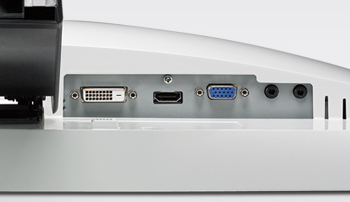I was helping a neighbor get surround sound from his iPhone a few weeks ago, I tried anyway. Dug out my trusty KEF iPod Dock that I purchased on a really good deal a few years ago. If you don't know KEF, they are an audiophile speaker company from the UK. The entire case of the speakers are metal! Anyway, let me get back to my story, took it over, plugged in all the wires (old clunky system, has more wires than the unit itself!). Docked an iPhone 4S (note: not even an iPhone 5). BAM! The apple'a version on BSOD, blue screen of death, "This accessory is not compatible with this Apple product". Nothing really to do beyond this...
This got me thinking, we all probably have an iPod Dock of some sort, like a clock radio, speaker system, cable with the receiver system etc. but Apple has made some suttle changes to the 30 pin connector in recent versions of their products and of course the new lightning connector! I quickly see every accessory in my house starting to become extinct. Well, as long as I keep my old apple products in working condition.
Sooooo, if you are considering to get an iPod Dock speaker system, don't!!!! Just stick to Bluetooth. The new wave of speaker systems like the Bose Soundlink II, Jawbone Jambox, Logitech UE boom box etc. are completely wireless. This means, no more docks and the phone or tablet or even laptop does not have to be next to the unit. You can"stream" it via Bluetooth. Using bluetooth also makes it easier to connect non-apple products (in the past you couldn't "dock" these), like android phones or tablets. You lucky Samsung owners can benefit from having music surround :-). Worh clarifying on thing, you can stream music from a tablet or phone or even a laptop that is BT ready.
A few things to consider whe choosing the type of portable speakers:
1. Size
2. Sound quality (smaller they are the less bass in the sound) - this is just a rule of thumb, some out there are great and small!
3. Battery life. Since they are portable, you want to be able to take the anywhere and play it without having to plug it into the wall.
4. Weight (goes with the portability comment!).
5. Compatibility should be Bluetooth, these are fairly standard. There is a slight chance that the BT versions change in time (very slowly in time), but I think you are ok for the next few years, but these Bluetooth protocols won't change hence you can always stream the music via this method.
6. Apple AirPlay, this is their own protocol that allows more control on iTunes wirelessly and helps with streaming across wifi.
The next wave of connected decides will probably be wifi based (router and direct). But until the protocols are defined and agreed upon, I think it will be a few years before we see true adoption across manufacturers.
I suggest taking the time to read reviews and also listen to the products at a store before buying. Personally, I have the older Bose sound dock and love the sound. The future will probably be the soundlink (note the dock name changed to link :-)).
If you have a favorite model that you are happy with, leave a comment so others can benefit from your experiences!
-Kannan















